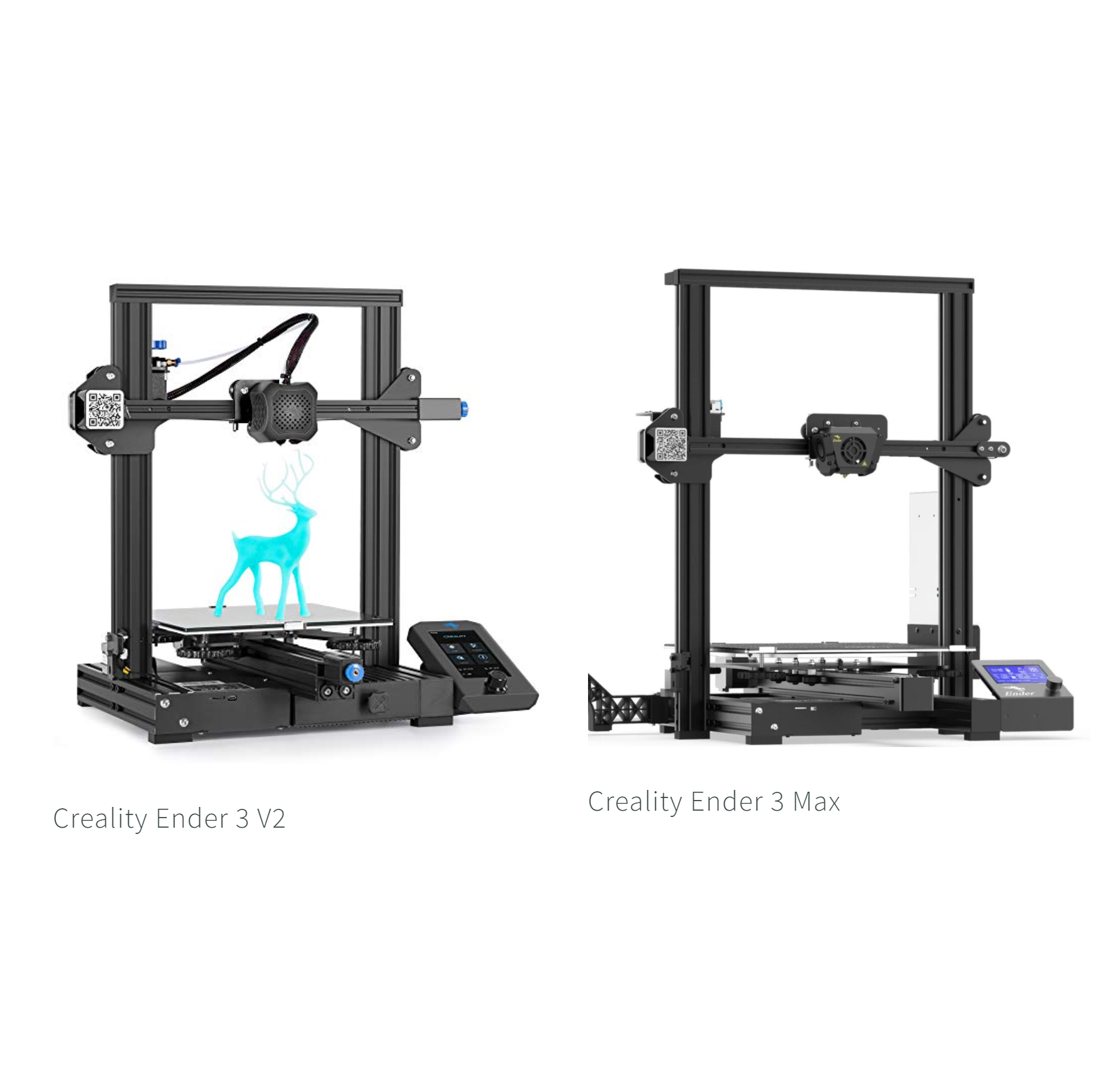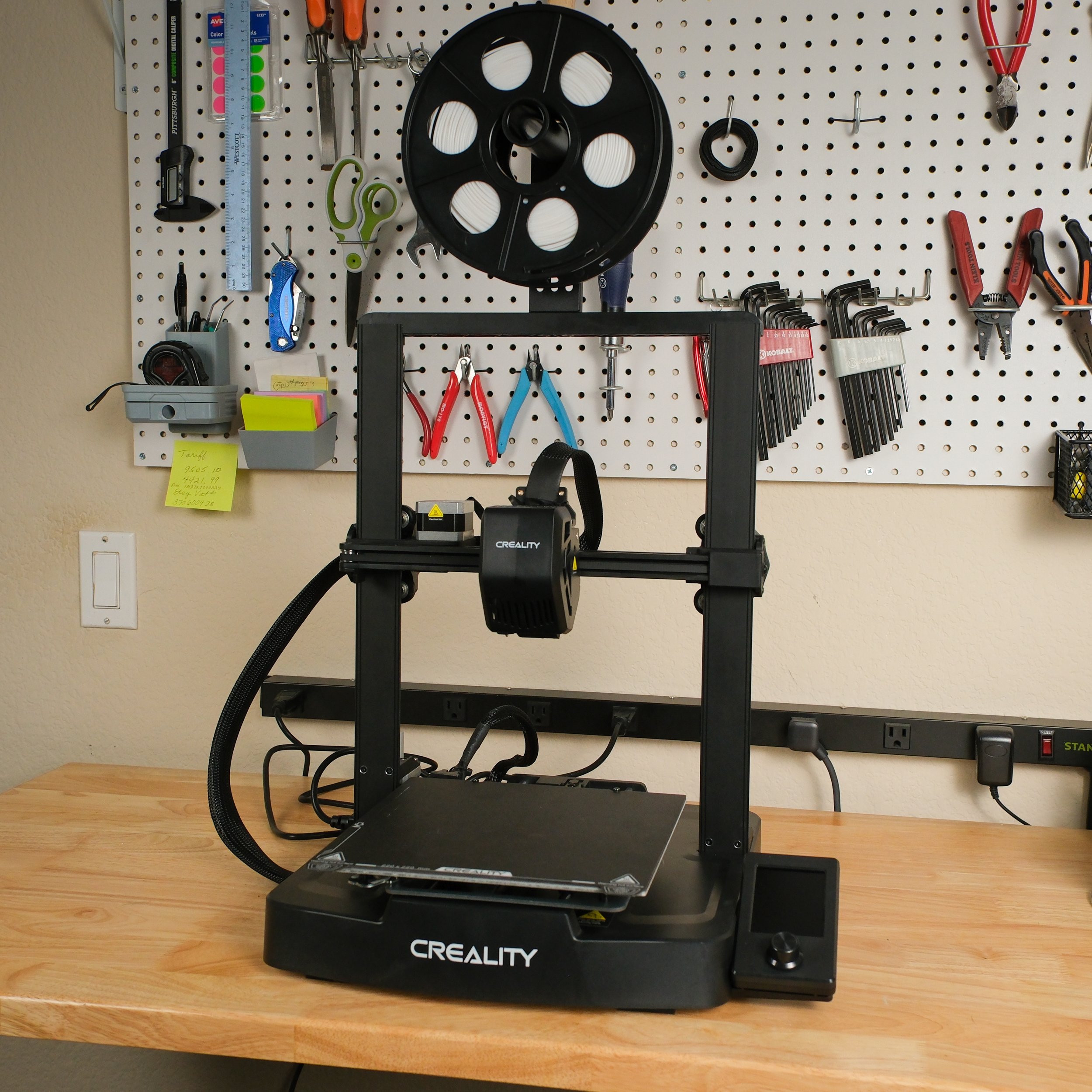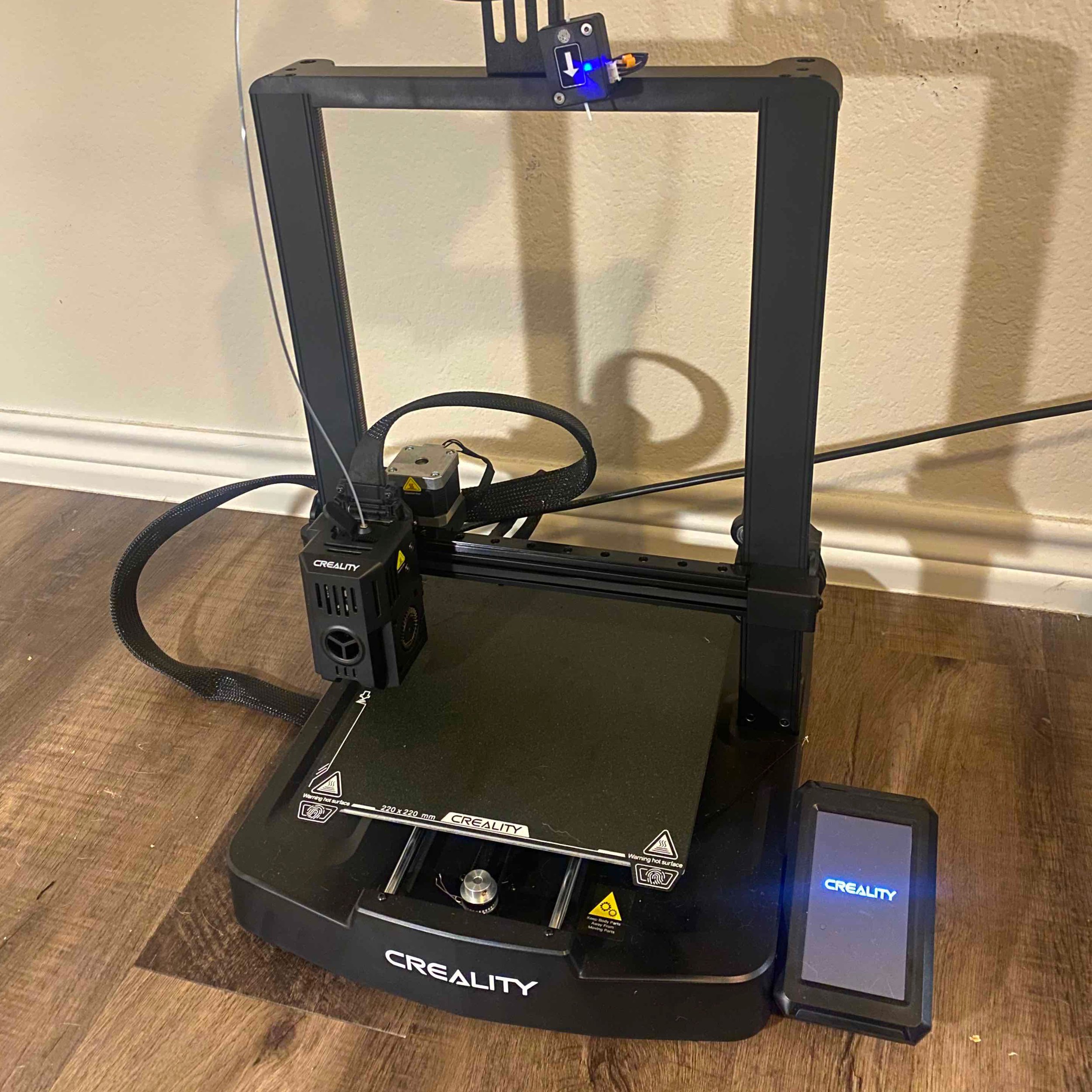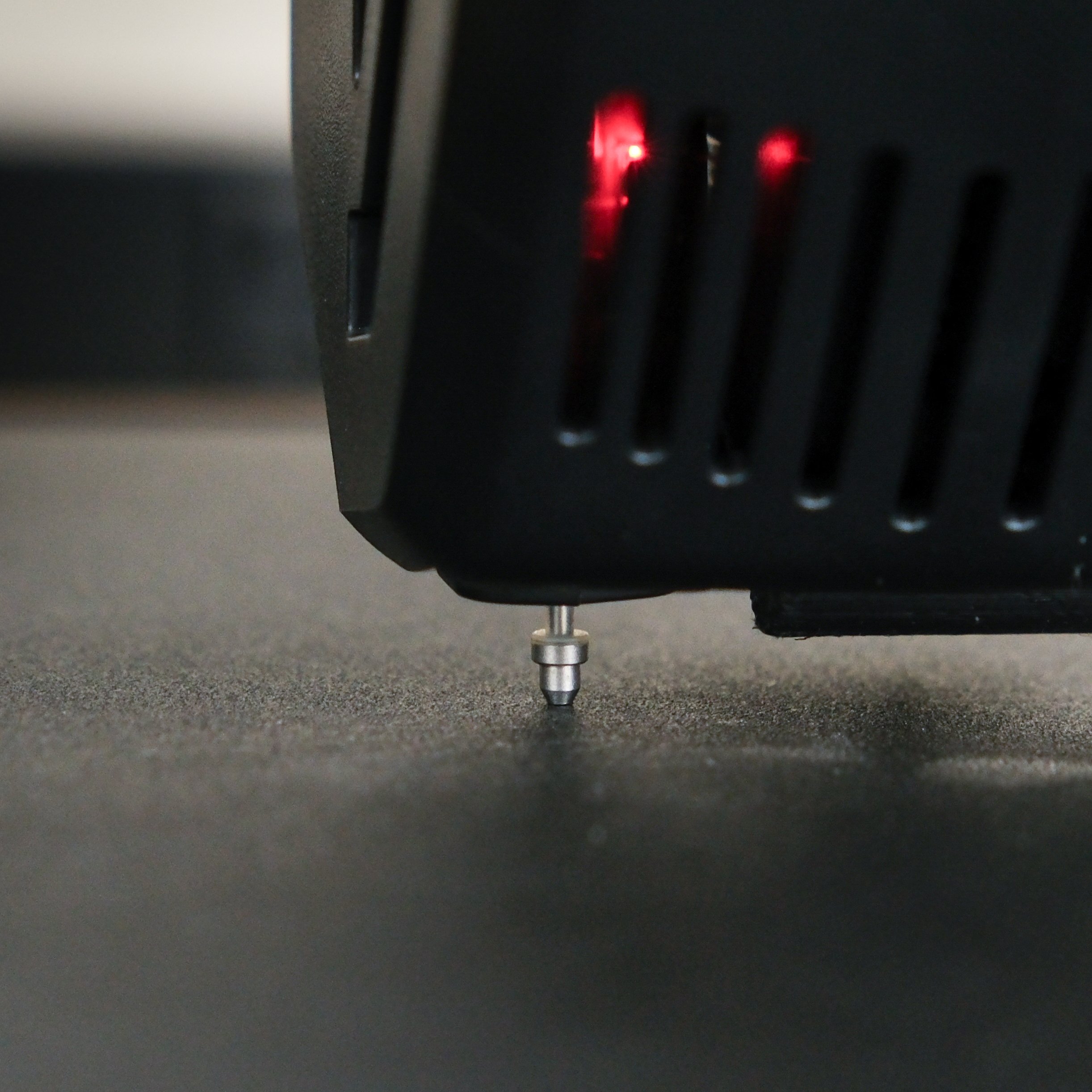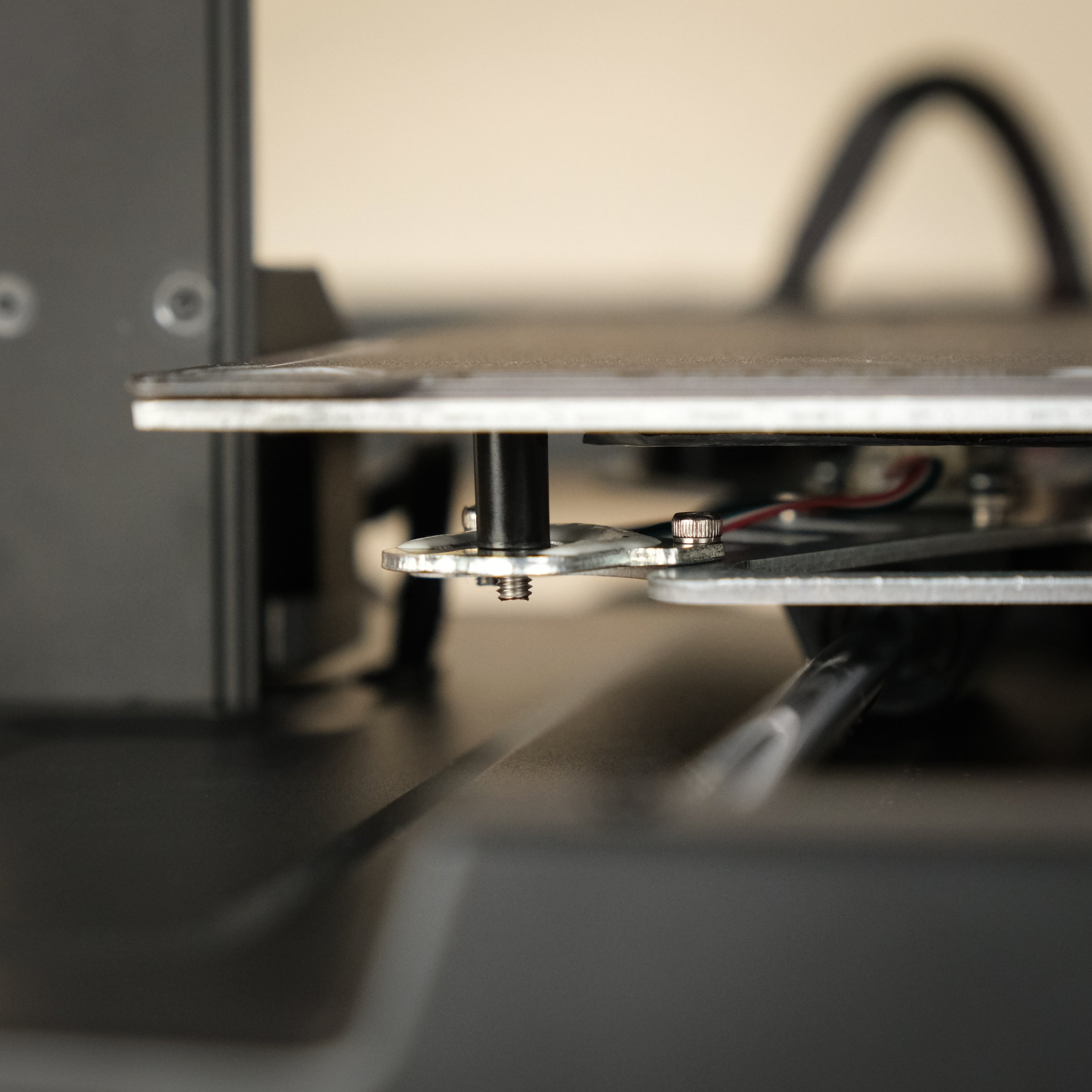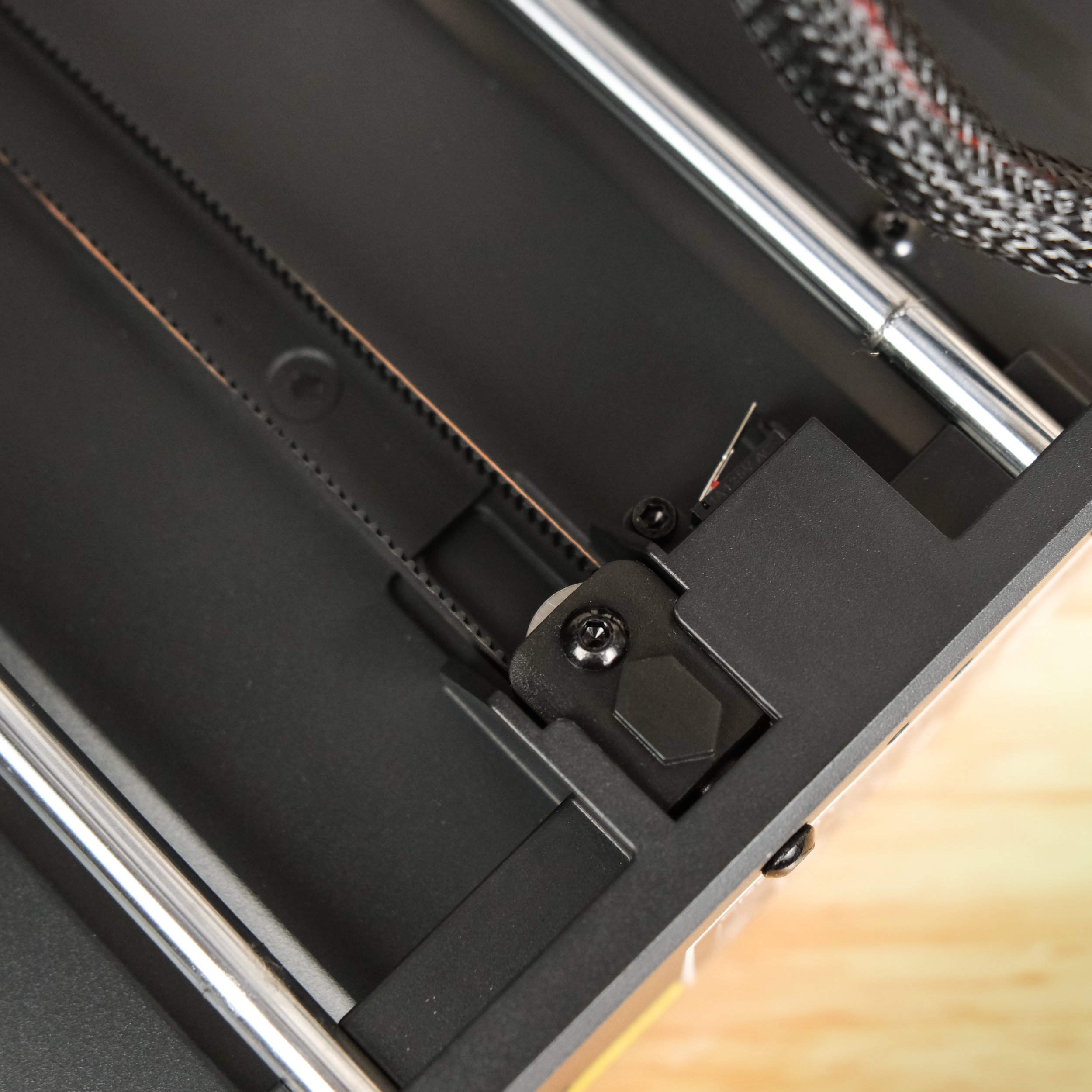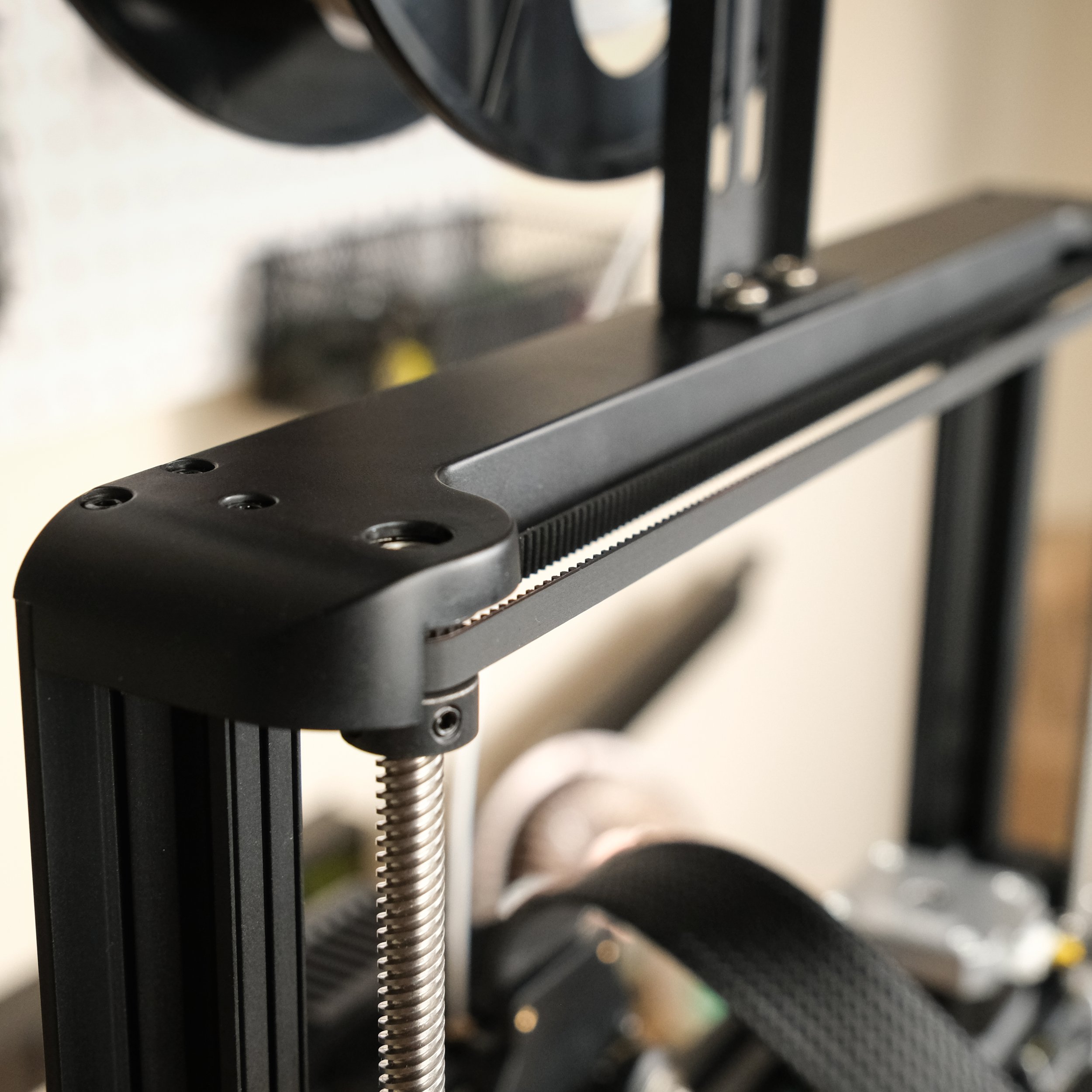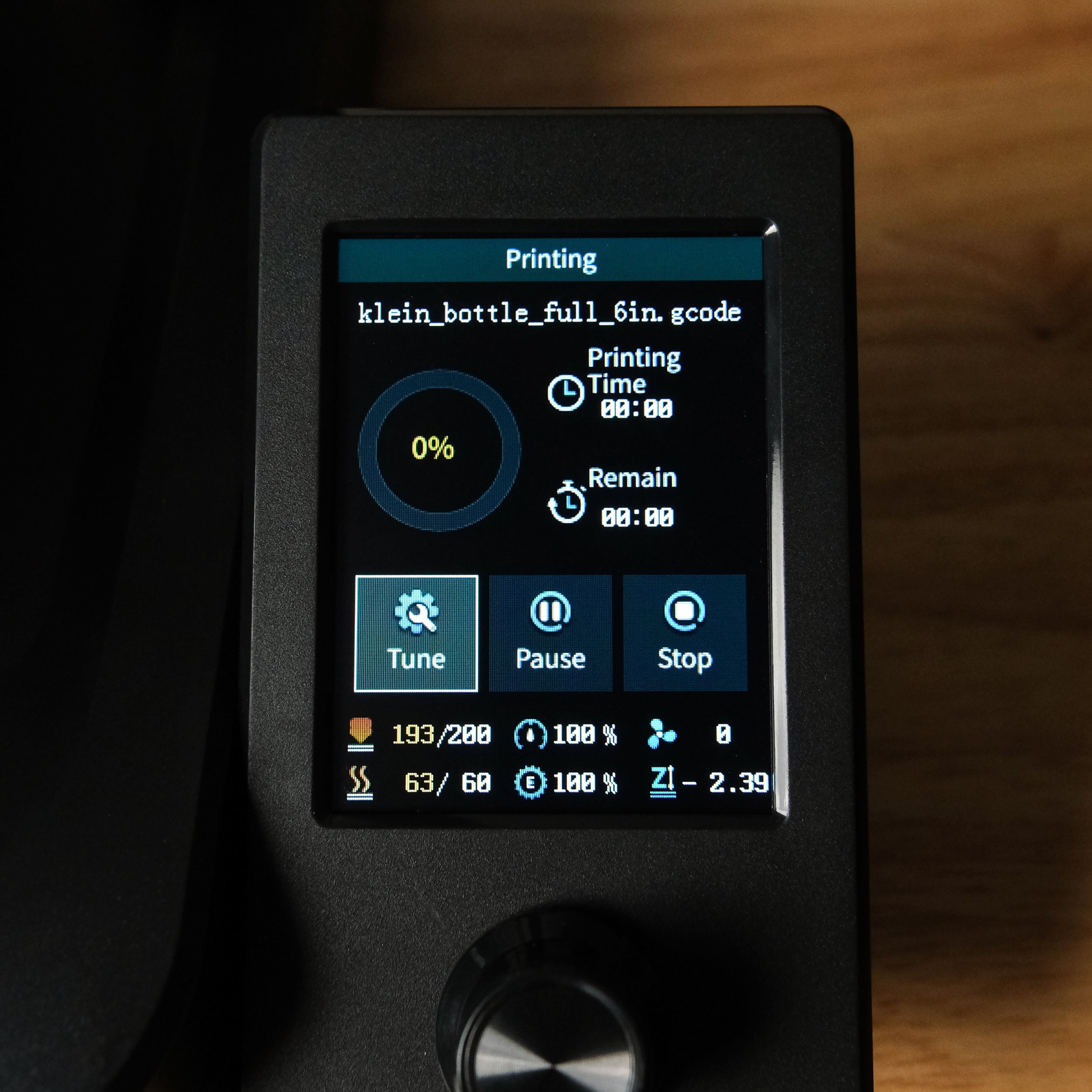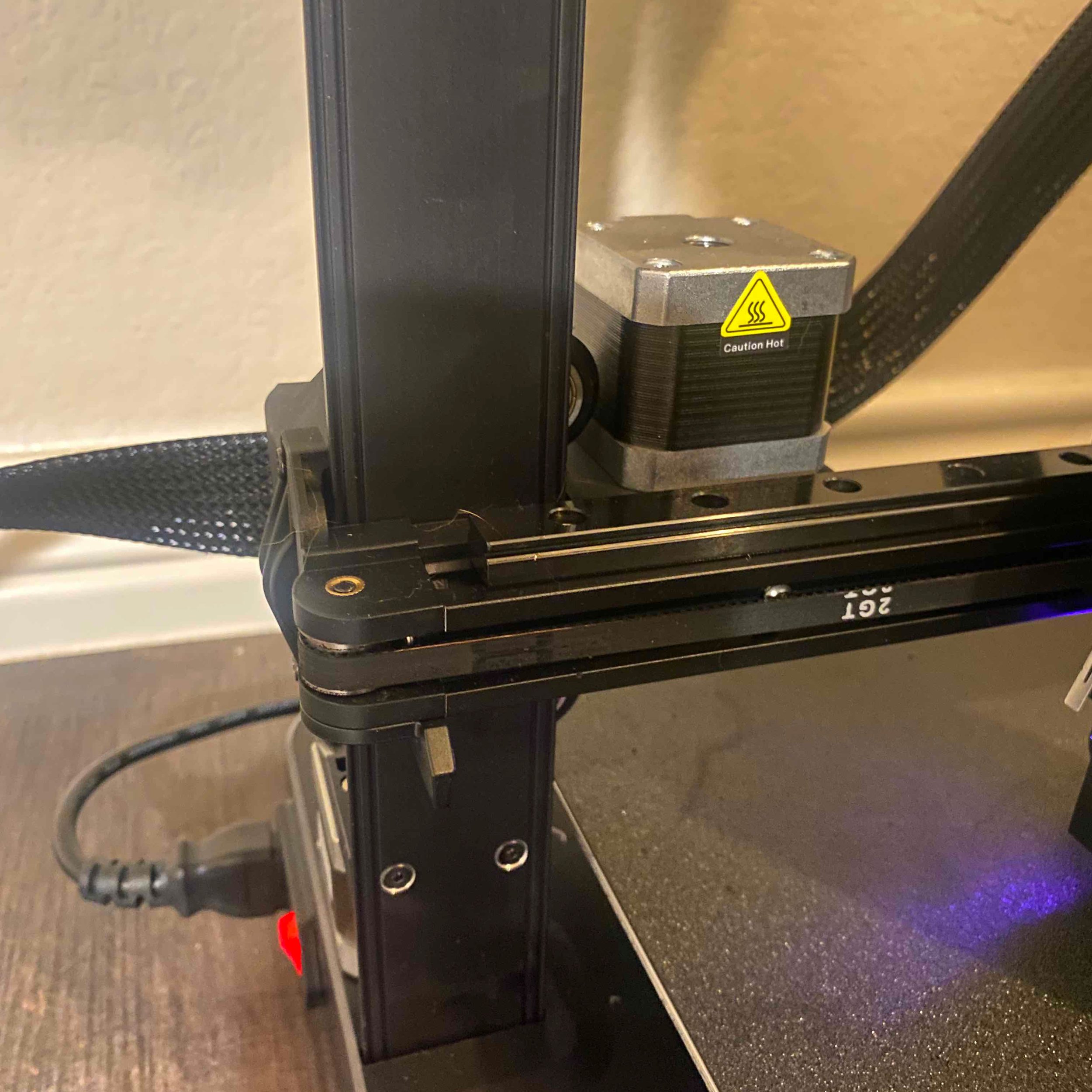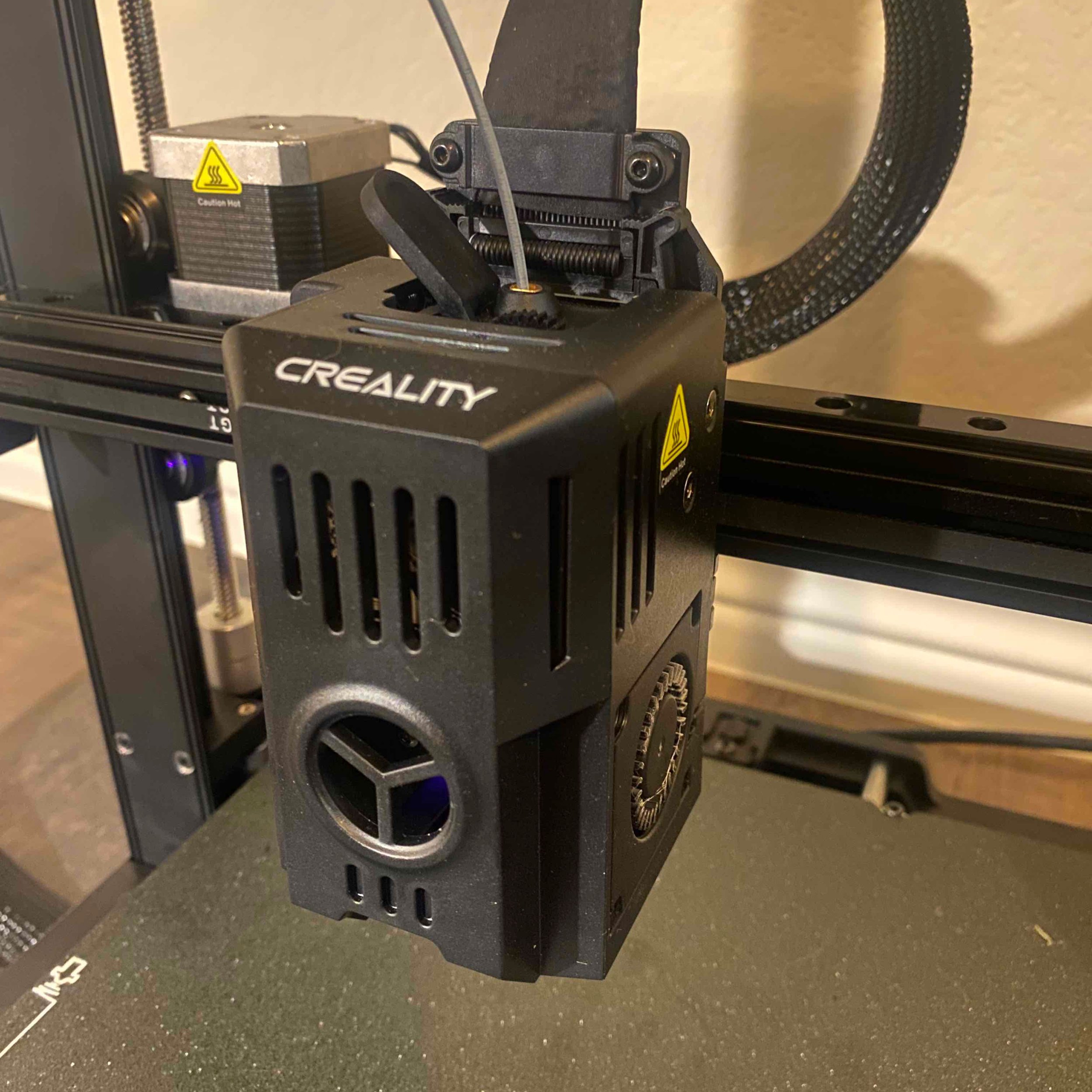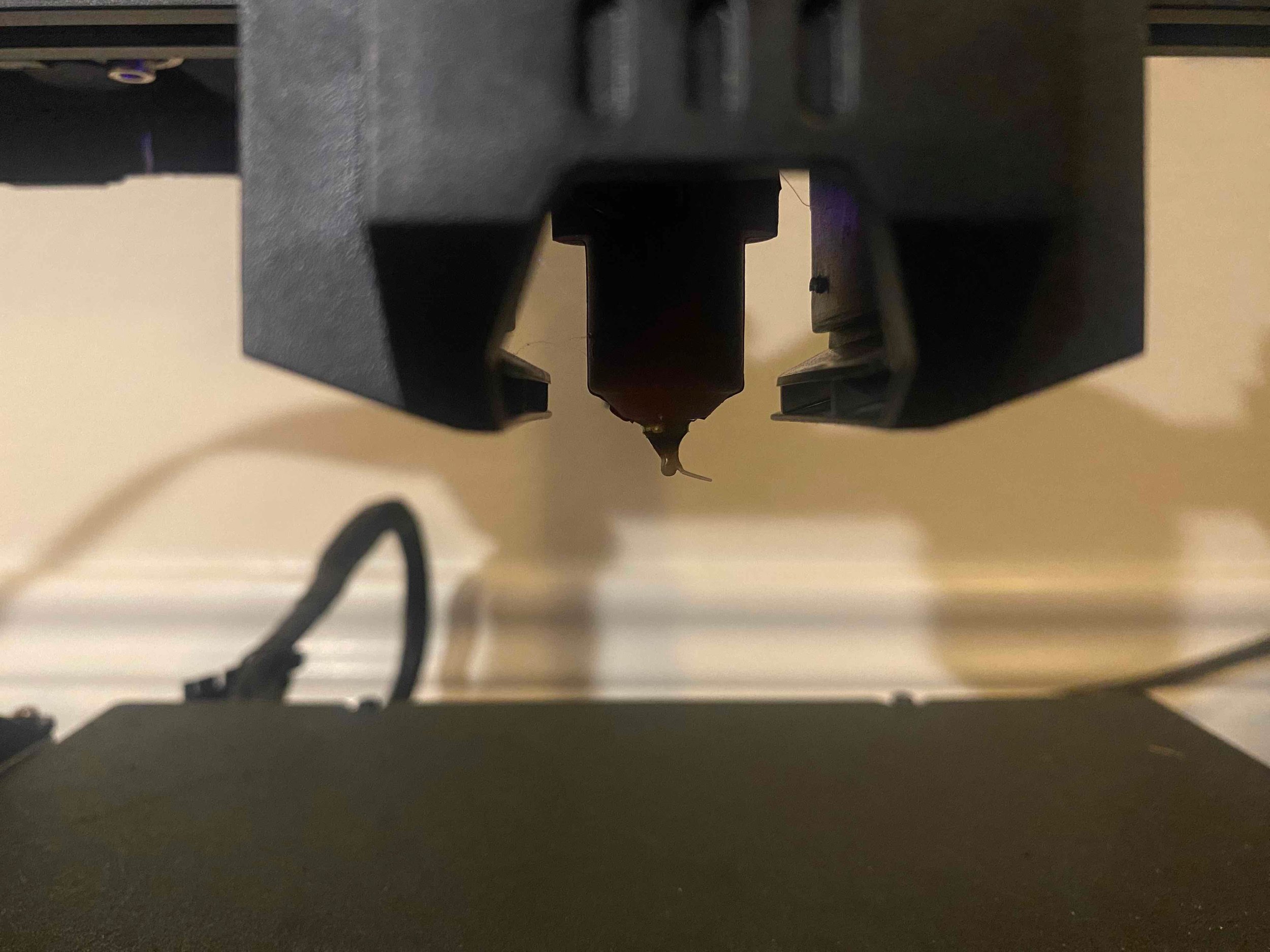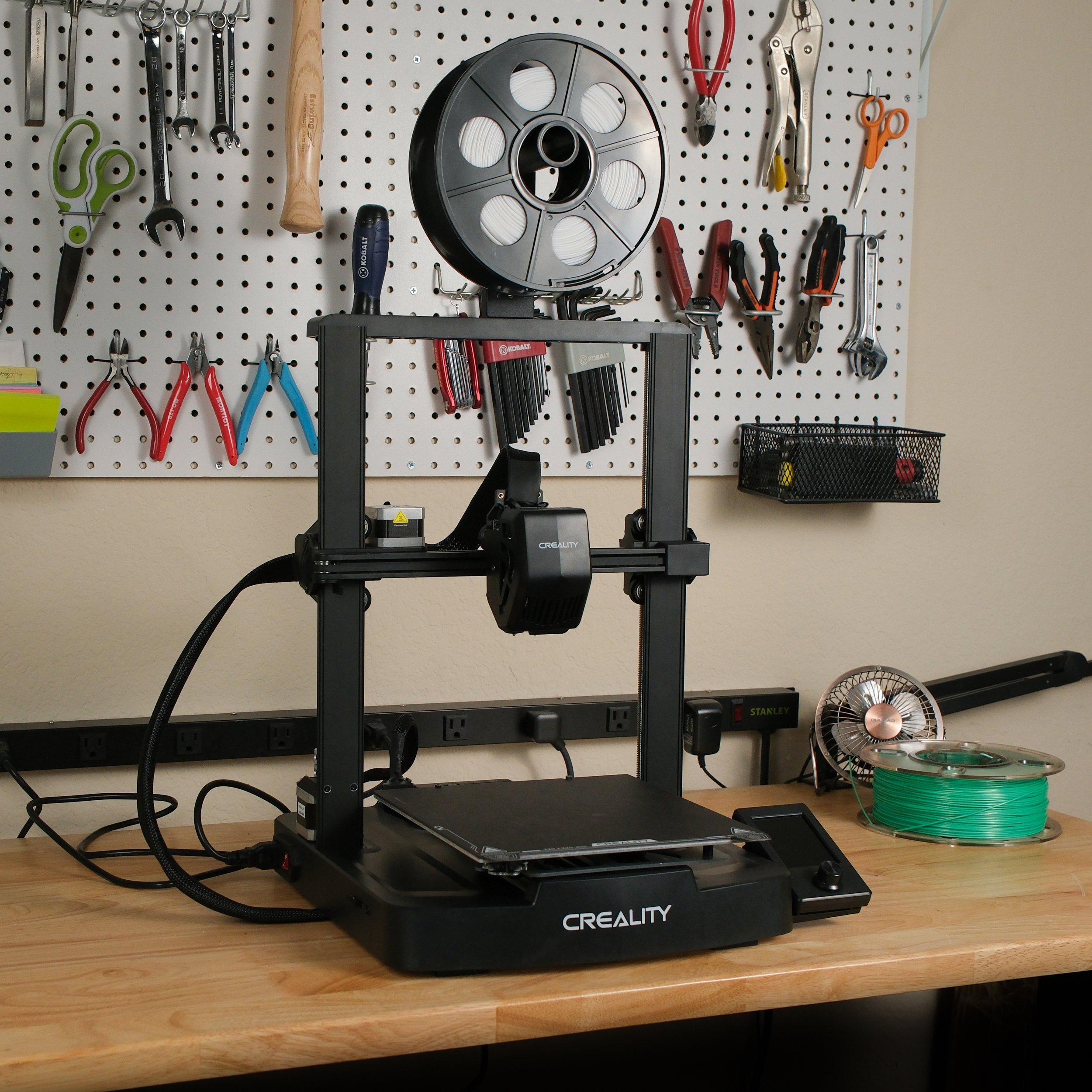Comparing the Creality Ender 3 V3 SE vs. Ender 3 V3 KE
Note: Creality Experts receives a commission for items you purchase from this page, at no additional cost to you. For more information, please see our affiliate link policy.
Creality has recently released two new 3D printers in the Ender 3 lineup, the Ender 3 V3 SE and Ender 3 V3 KE. These machines are similar in many ways, and in this article, we'll explain the differences between them to help you determine which of these machines is a better fit for you.
Update 11/22/2023: The Ender 3 V3 KE is now in stock! You can find it on Amazon here.
Both the Creality Ender 3 V3 SE and Ender 3 V3 KE released in the fall of 2023. Here are the key specs at a glance:
Vs.
Creality Ender 3 V3 SE and Ender 3 V3 KE Similarities
The Creality Ender 3 V3 SE and Ender 3 V3 KE are in the same Ender 3 family and share many of the same basic design elements. We'll cover the major similarities in this section.
Build Volume
The Ender 3 V3 SE and Ender 3 V3 KE have very similar build volumes, matching most of the other printers in the Ender 3 series:
Ender 3 V3 SE: 220 x 220 x 250 mm (8.6" x 8.6" x 9.8")
Ender 3 V3 KE: 220 x 220 x 240 mm (8.6" x 8.6" x 9.4")
Both printers use the Sprite direct drive extruder, which we’ve found to be reliable and easy to use.
There is a slight difference in the Z axis build volume, which we make note of in the Differences section below, but these printers essentially offer the same build volume. We've found this to be a good all-around size that allows you to print many types of 3D models without needing to find desk space for a large 3D printer. However, if you want to print very large models, one of Creality's larger 3D printers is likely to be a better choice, such as the Ender 3 S1 Plus or CR-M4 [Amazon links].
Direct Drive Extruder
Both printers include Creality's Sprite direct drive extruder, which is a substantial upgrade over previous entry-level Creality 3D printers. In our experience, the Sprite extruder is extremely reliable, with significantly less chance of jamming than Bowden extruders. It also makes the printer much more capable of printing flexible filament, such as TPU. We're happy to see the Sprite extruder on printers in this price class.
Automatic Bed Leveling
The Ender 3 V3 SE and Ender 3 V3 KE both include automatic bed leveling with the Creality CR-Touch bed leveling sensor. Automatic bed leveling probes the print bed in a grid pattern before printing, allowing the printer to compensate for any leveling issues to ensure a mor consistent first layer and more reliable printing. We appreciate automatic bed leveling as a convenience feature that makes it easier to calibrate the printer, and the CR-Touch is our favorite bed leveling sensor due to its reliability and metal probe.
Both printers also include a new strain gauge sensor on the print bed that allows the printer to set the Z offset automatically. On older Creality 3D printers, you had to manually configure a Z offset value using the controller, to tell the printer exactly how much distance there was between the tip of the probe and the nozzle itself. The V3 SE and KE can automatically set this offset by using the strain gauge to detect when the nozzle touches the bed. This saves another calibration step.
Motion System
Both the Ender 3 V3 SE and Ender 3 V3 KE use a standard Cartesian motion system, where the carriage moves left and right on the X axis, the bed moves forward and backward on the Y axis, and the X axis raises on a gantry along the Z axis. This is by far the most common motion system for consumer 3D printers, and has been used on many Creality 3D printers in the past.
The printers both use linear rods for the Y axis, which reduces vibration when printing at high speeds--this is a first for the Ender 3 series, and it's likely a contributing factor to the high maximum print speeds of both printers.
Additionally, both printers feature two Z lead screws, which ensures the gantry raises evenly on both sides. Because the Sprite direct drive extruder is heavier than a Bowden extruder, having the dual Z lead screws helps deal with the extra weight and ensures consistent printing as the model builds upward. Interestingly, both printers implement this with a single Z motor and connect the two lead screws together with a belt at the top of the printer. This is a clever design that eliminates the need for a second motor and ensures the two lead screws are always synchronized, and we've seen good results from this system in our testing of the SE.
Both printers feature linear rods for the Y axis, which reduces vibration at high speeds.
The two Z lead screws are driven by a single motor and are connected with a rubber belt at the top of the printer.
There is a slight difference in the motion system between the two printers: the KE uses a linear rail on the X axis, while the SE uses a standard rubber wheel riding along an aluminum extrusion. We'll cover that difference and its implications later in this article.
Next, we'll cover the differences between the Ender 3 V3 SE and Ender 3 V3 KE.
Creality Ender 3 V3 SE and Ender 3 V3 KE Differences
The Creality Ender 3 V3 SE and Ender 3 V3 KE have several important differences that impact the print speed, capability, and user experience of each 3D printer. In this section, we'll cover each of these differences and explain the details of each.
Controls and Firmware
The Ender 3 V3 KE includes significantly more advanced firmware than the Ender 3 V3 SE. Creality is referring to it as "Creality OS", but this appears to be the same firmware that is on the CR-10 Smart and the Creality Sonic Pad. That firmware, which is based on the Klipper open-source project, enables some key features that improve the usability and print quality of the KE.
The Klipper-based firmware has significantly more processing capability than the standard firmware used on most other Creality 3D printers, which allows the Ender 3 V3 KE to print at high speeds without introducing print defects. In combination with some hardware improvements that we'll discuss later, this feature allows the KE to print significantly faster than the Ender 3 V3 SE, which was already much faster than older Creality 3D printers. To further improve the performance at high speeds, you can add an optional vibration compensation sensor [Amazon link] to the KE to further tune the firmware. This isn't supported on the Ender 3 V3 SE.
This display, on the Ender 3 V3 SE, is more advanced than many of Creality’s older printers, but it’s less capable than the touchscreen display on the KE model.
The newer firmware in the Ender 3 V3 KE also improves the usability of the printer, both in direct control as well as remote monitoring. On the printer itself, the KE includes a 4.3" touchscreen controller which we prefer over the smaller 3.2" screen and knob controller on the Ender 3 V3 SE. Both printers have clean user interfaces and display more information than what we've seen on older Creality 3D printers, but the KE is able to display more information and display it more clearly due to its more advanced firmware.
As a result of its firmware, the KE also introduces remote control and monitoring functions that aren't found on the SE. It includes WiFi, allowing you to connect to the printer wirelessly to view its status from a smartphone or computer. You can use the WiFi connection to load .gcode files for printing, as well as to remotely operate the printer or monitor the progress of an ongoing print. The KE also supports a USB webcam, allowing you to view the print remotely. While these features aren't necessary for 3D printing, we definitely appreciate these added capabilities. In particular, loading files over WiFi reduces one of the major annoyances of 3D printers--carrying an SD card back and forth from the computer, or keeping the printer plugged in via USB during printing.
The controls and firmware capabilities are one of the biggest differentiators of the Ender 3 V3 KE over the Ender 3 V3 SE. While the SE provides a solid foundation of features in its firmware, the KE is clearly more advanced, giving you higher qualiity prints as well as convenience features such as WiFi control.
Print Speed
Even at high print speeds, these printers can produce great prints. These parts were printed at 175 mm/s.
The KE model includes a linear rail on the X axis, which should reduce vibration at high print speeds.
The Ender 3 V3 KE advertises a much faster maximum print speed than the Ender 3 V3 SE. The KE advertises a maximum speed of 500 mm/s and a typical speed of 300 mm/s, while the SE advertises a maximum printing speed of 250 mm/s and a typical speed of 180 mm/s. We never like to fully trust the maximum print speeds, because that speed is often only attainable on certain 3D models or introduces more print defects. However, we think the typical print speed is more trustworthy--we've tested our SE at the 180 mm/s "typical" print speed, and the resulting print maintained a high level of quality. So while you may not be regularly printing at 500 mm/s with the KE, it is notably faster than the SE.
The KE is able to attain higher print speeds through a combination of firmware and hardware upgrades. First, as we described in the firmware section above, the Klipper-based firmware in the Ender 3 V3 KE is more sophisticated and includes features to reduce print defects when printing at high speeds. In addition, the KE uses a linear rail for the X axis, which reduces vibration and allows the carriage to move more smoothly along the axis at high speeds. The SE uses a standard rubber wheel system on the X axis.
It's important to note that both the Ender 3 V3 KE and Ender 3 V3 SE are able to print much faster than older Creality machines such as the original Ender 3 or CR-10. Most of the older 3D printers were not able to print reliably above 60-70 mm/s, and even the SE can print at roughly triple that speed. However, if you want the fastest printing possible, the KE will be a better choice.
Hot End
The hotend on the Ender 3 V3 SE is a newer variant of Creality's Sprite extruder and hotend system, and is capable of heating to 260° C. This makes the SE able to print all standard filament types, including PLA, ABS, PETG, and TPU. However, it's unable to print high-temperature materials, such as nylon.
The hotend on the KE can heat to 300° C, enabling the use of high-temperature filament.
The Ender 3 V3 KE uses an upgraded version of the Sprite hotend that is capable of heating to a higher temperature of 300° C. It has a more powerful 60W heater (compared to 40W in the SE) and it uses a “volcano” style design with a larger heat zone than a normal hotend. This means the hotend can heat filament faster, which is important for high-speed printing.
The KE's hotend also includes a bimetallic heatbreak, which is a technology we've tested previously on older Creality machines and found to reduce the chance of hotend jams. We don't think hotend jams are much of a concern on either of these printers since they use the Sprite direct-drive extruder, but the bimetallic heatbreak should still improve the performance of the hotend with high-temperature filament.
For many users, this won't be a meaningful difference--the standard filament types all work well on either machine, and we find that we mostly use the standard filament types, such as PLA. However, the Ender 3 V3 KE does give you the ability to print high-temperature filaments, such as nylon.
Part Cooling
Like almost all modern 3D printers, the Ender 3 V3 KE and SE both include a part cooling fan, which blows cool air onto the filament as soon as it is extruded, improving the overhang performance and generally resulting in cleaner prints. We've found that the arrangement of part cooling fans and geometry of the cooling ducts can play a large role in the effectiveness of this feature, and the two printers definitely implement this differently.
Illustration of the part cooling inconsistencies of the SE model. The only difference in these prints is the orientation on the print bed. The KE model appears to have more comprehensive part cooling and should give consistent results no matter how the part is oriented.
The KE uses a dual part cooling fan design that is more effective than the single fan on the SE.
The SE includes a single part cooling fan which blows toward the nozzle from the front. We noted in our review of the Ender 3 V3 SE that the part cooling performance differs depending on how you orient the part on the print bed, likely because the cooling fan only blows from one side of the print. Overall, we feel that the part cooling on the SE is effective, but not a standout.
With the Ender 3 V3 KE, Creality seems to have tried to address this issue by adding a second cooling fan. The two cooling fans sit on either side of the hotend and blow toward each other, which should result in the part being cooled more evenly. We haven't had the opportunity to test this for ourselves, so we can't say with certainty that it solves the inconsistencies we saw with the part cooling on the SE. However, the KE seems to have a better design that should cool the part more effectively.
Bed Surface
The two printers both include a flexible magnetic bed surface, which can be easily removed to aid in part removal, as well as making it easy to replace or upgrade the material. However, there is an important difference in the default bed surface included with each machine.
The Ender 3 V3 SE includes a PC spring steel bed surface, which has a coarse coating. While we've found this bed material to have excellent layer adhesion and have seen generally good performance from it, it's not our favorite bed material because parts can sometimes stick too well and it's possible to damage the coating when removing parts. For that reason, we've recommended that SE users consider upgrading to a PEI bed surface [Amazon link], which can be easily installed since the surface attaches to the print bed magnetically.
On the other hand, the Ender 3 V3 KE includes the PEI bed surface by default. We prefer PEI because it has a smooth finish that makes the base of 3D prints look great, but easily releases the prints once the bed cools down. This is a nice upgrade over the PC spring steel bed surface on the SE.
Size and Z Axis Build Volume
The Ender 3 V3 SE and Ender 3 V3 KE differ very slightly in Z axis size, with the KE being 10mm shorter in the Z dimension:
Ender 3 V3 SE: 220 x 220 x 250 mm (8.6" x 8.6" x 9.8")
Ender 3 V3 KE: 220 x 220 x 240 mm (8.6" x 8.6" x 9.4")
This is a fairly insignificant difference, and we find that we very rarely use the entire Z height of any 3D printer. But if you want to print objects that will push the limit of the Z axis, you'll have slightly less headroom with the KE.
In terms of size and desk footprint, the two printers have a slightly more notable disparity, with the KE being a bit wider:
Ender 3 V3 SE: 349 x 364 x 490 mm (13.74" x 14.3" x 19.3")
Ender 3 V3 KE: 433 x 366 x 490 mm (17.05" x 14.4" x 19.3")
Whether this slight difference in width matters depends on where you plan to put the printer. The KE is only about 3.2" wider, but if you're tight on desk space or are trying to fit multiple printers on a shelf, the larger footprint of the KE could be a factor.
Filament Runout Sensor
The Ender 3 V3 KE includes a filament runout sensor, while the Ender 3 V3 SE does not include the sensor and instead offers it as an optional upgrade.
In our opinion, the filament runout sensor isn't a particularly beneficial addition to Creality 3D printers. We've discovered that when the sensor detects that the filament has run out, it stops the print and cools down the bed, which releases the printed model and renders it impossible to resume. For that reason, unless you're closely monitoring the printer and happen to notice the moment the filament runout is detected, it's unlikely to save a print. So while it's a small added benefit on the KE, we don't think this is a meaningful difference between the two printers.
Which Printer Should You Choose?
The Creality Ender 3 V3 SE and Ender 3 V3 KE both offer an impressive feature set over previous printers in Creality's Ender 3 lineup. We were excited to see the improvements in the V3 SE when it released, and the V3 KE slots in nicely above it with several notable upgrades and a higher price point to match. We think either machine would be a great first (or second, or third, or tenth) 3D printer, and have no major concerns with either machine.
However, the KE clearly offers significant added capability over the SE. Of the differences, we think the firmware improvements and higher maximum print speed are the biggest reason to choose the Ender 3 V3 KE over the SE. The Klipper-based firmware in the KE enables faster, cleaner prints, and features such as WiFi printing make it feel like a more modern machine. The print speed improvements, along with the addition of the linear rail on the X axis, will allow you to print faster, which reduces one of the biggest annoyances in 3D printing. The other improvements in the KE, such as the upgraded part cooling, high-temp hotend, and PEI bed surface, are also all meaningful improvements that you're likely to appreciate.
On the other hand, the Ender 3 V3 SE has a lower price than the KE model and offers many of the same core features, such as the Sprite direct drive extruder, automatic bed leveling, and a higher print speed than many older Creality 3D printers. In our testing so far, it's been a reliable, easy-to-use machine that produces great results.
Our opinion is that the Ender 3 V3 KE is worth the added cost for most users. It has some of the key upgrades that you may want to add to the Ender 3 V3 SE eventually, and generally has a more advanced feature set that makes it competitive with 3D printers that are much more expensive. However, if you're unable to find a KE in stock or the price difference between the machines is a major factor in your decision, the SE is also a solid choice.
You can view the two printers on Amazon here:
If you’d like to compare other printers, take a look at our 3D Printer Comparison Tool. This tool lets you view multiple 3D printers side by side to easily compare features.
